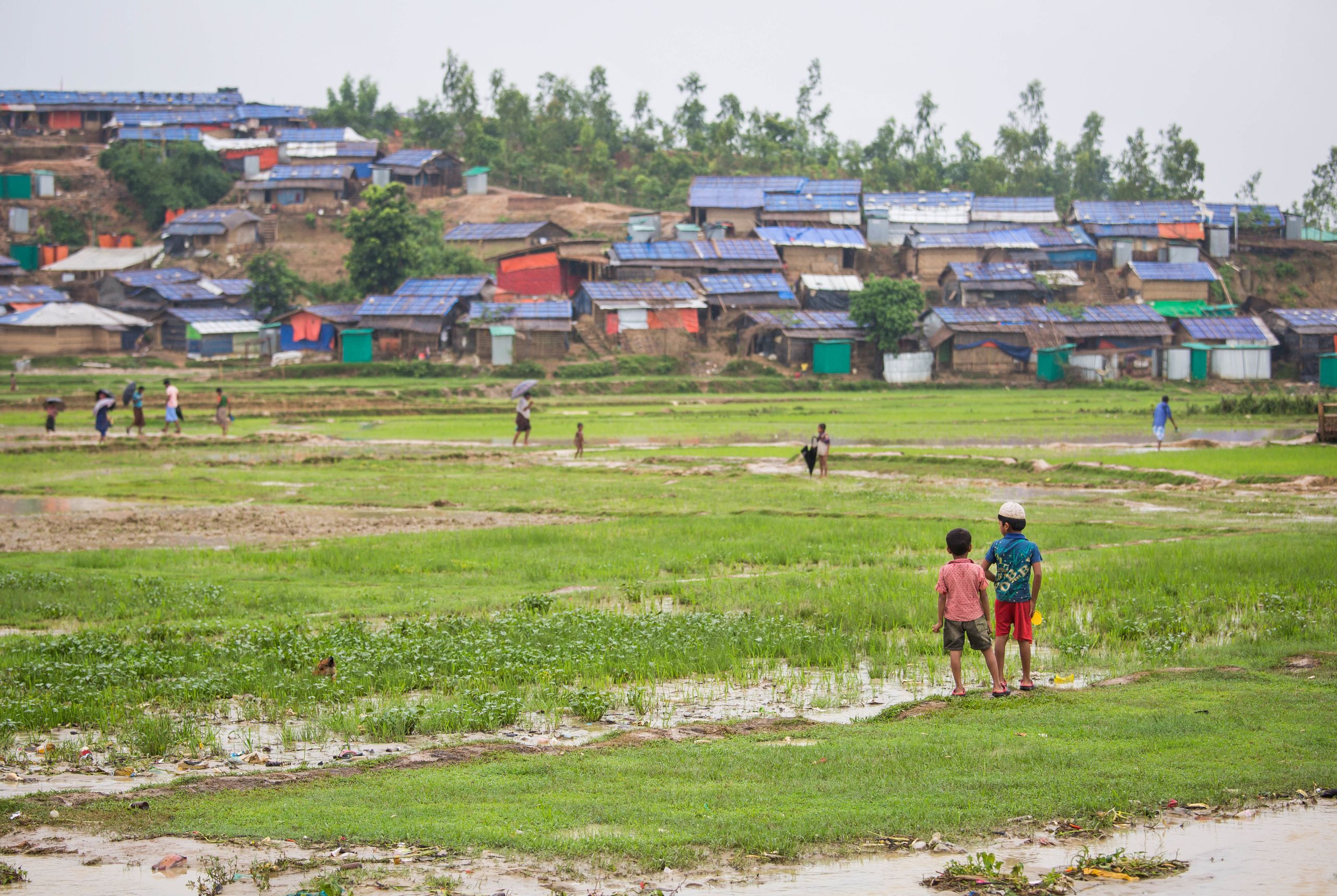3,000 Rohingya refugees train to tackle natural disasters

Bangladesh, one of the
most disaster-prone
countries in the world,
credits its community-led
disaster preparedness
program for saving hundreds
of thousands of lives. Now,
aid groups hope the same
decades-old strategy can help
1 million Rohingya refugees
survive the lengthy monsoon
season.
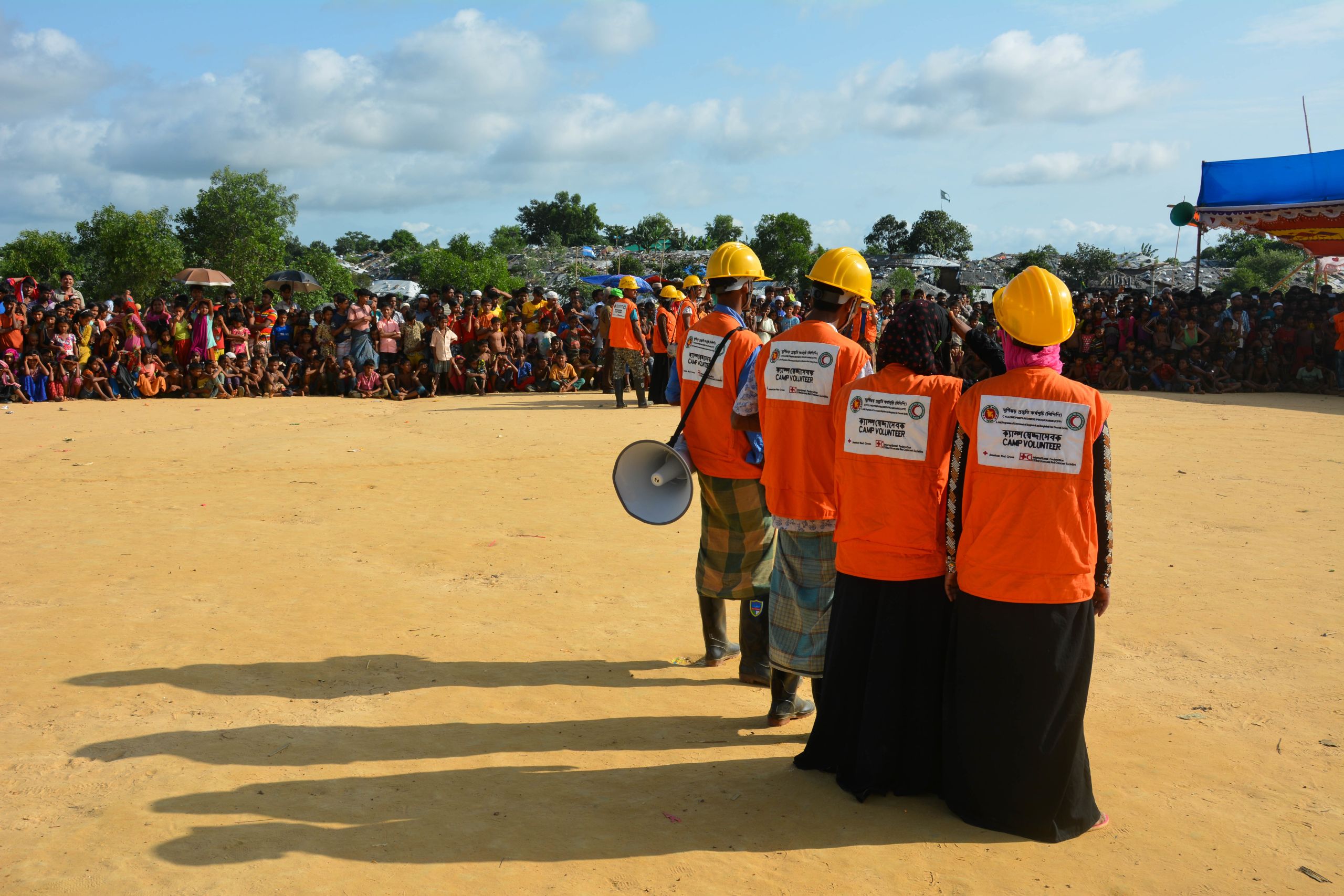
COX’S BAZAR, Bangladesh — Children who were playing soccer just minutes before now lay sprawled on the ground, knocked down by gale force winds. Several adults, equipped with first-aid kits and bearing grim expressions, rush to their assistance and begin tending to the injured.
But it’s scorching hot, the sky shimmering and still rather than dark with storm clouds. And the kids are giggling — a few of them grinning and poking one another as the volunteers bandage imaginary wounds and help them limp back to shelters on uninjured legs.
This dusty clearing in Bangladesh’s sprawling Kutupalong-Balukhali mega-camp is often used for food distribution.
Today, the space is crowded with children, teens, and adults participating in a simulation for the country’s disaster preparedness program, the first of many to prepare Rohingya refugees for the severe weather that rips through the landscape for two cyclone seasons each year.
Bangladesh, one of the most disaster-prone countries in the world, credits its community-led Cyclone Preparedness Program for saving hundreds of thousands of lives since its creation in the 1970s. Now, aid groups hope the same strategy can help vulnerable refugees survive a dangerous monsoon season inside bamboo and tarpaulin shelters.
Once home to about 500,000 people, the undulating land south of Bangladesh’s beloved beachside town of Cox’s Bazar now hosts over 1 million Rohingya who have fled persecution and violence in Myanmar’s Rakhine State.
Nearly 700,000 refugees have arrived since a military clearance operation in August 2017, settling in once-forested regions of Ukhia and Teknaf.
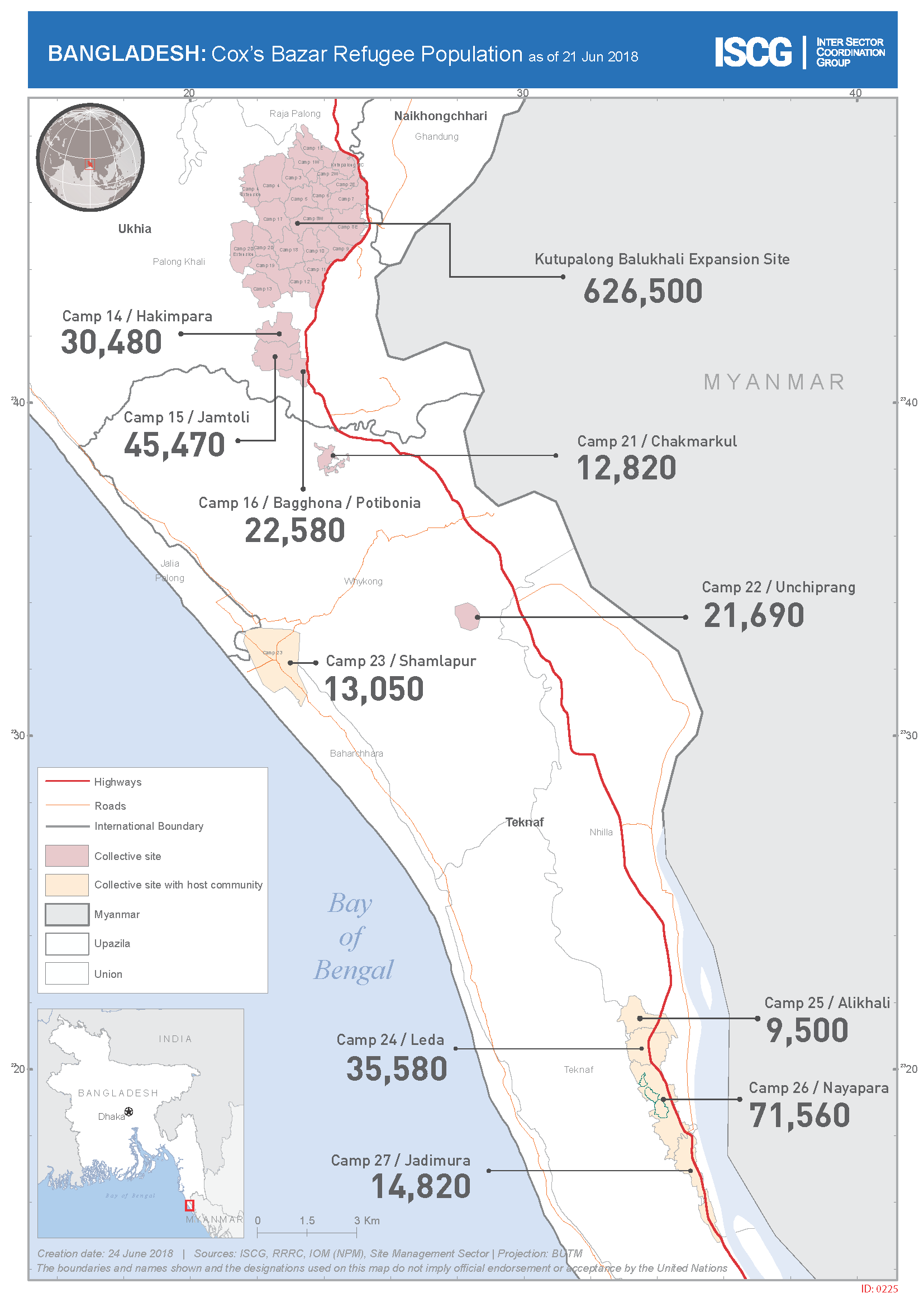
Aid groups have worked for months to help refugees prepare their overcrowded, hilly settlements for severe weather.
Trucks loaded with bamboo speed toward the camps to help reinforce clinics and shelters. Stones, wood, and trash piled on tarpaulin roofs offer meager support to secure thin sheets in an ongoing battle against strong winds. Stripped of vegetation and devoid of proper drainage, the ground has become a magnet for landslides and flooding.
Already, heavy rainfall in early June battered flimsy shelters and caused more than 100 landslides throughout the camps.
The International Organization for Migration, United Nations High Commissioner for Refugees, and other groups, have relocated more than 30,000 at-risk refugees to safer areas — but available land is scarce, and IOM will be asking the government for more space for the estimated 200,000 refugees whose shelters remain at high risk of landslides and flooding, George Gigauri, IOM’s new chief of mission in Bangladesh, told Devex in Cox’s Bazar.
In the meantime, aid groups are seeking severe storm preparation advice from Bangladesh — a country once regularly devastated by severe weather, which has since emerged as a leader in early warning systems.
In June, teams from CPP, the Bangladesh Red Crescent Society, and the American Red Cross began training refugees in the country’s community-based disaster preparedness program.
In 1970, Cyclone Bhola tore across low-lying coastal areas and killed an estimated 300,000 people. Afterward, Bangladesh began the long process of modernizing its early warning systems, constructing storm shelters along the coast, developing evacuation plans, and raising awareness about the dangers of storm surges at community level.
In 1973, Bangladesh formalized the Cyclone Preparedness Program.
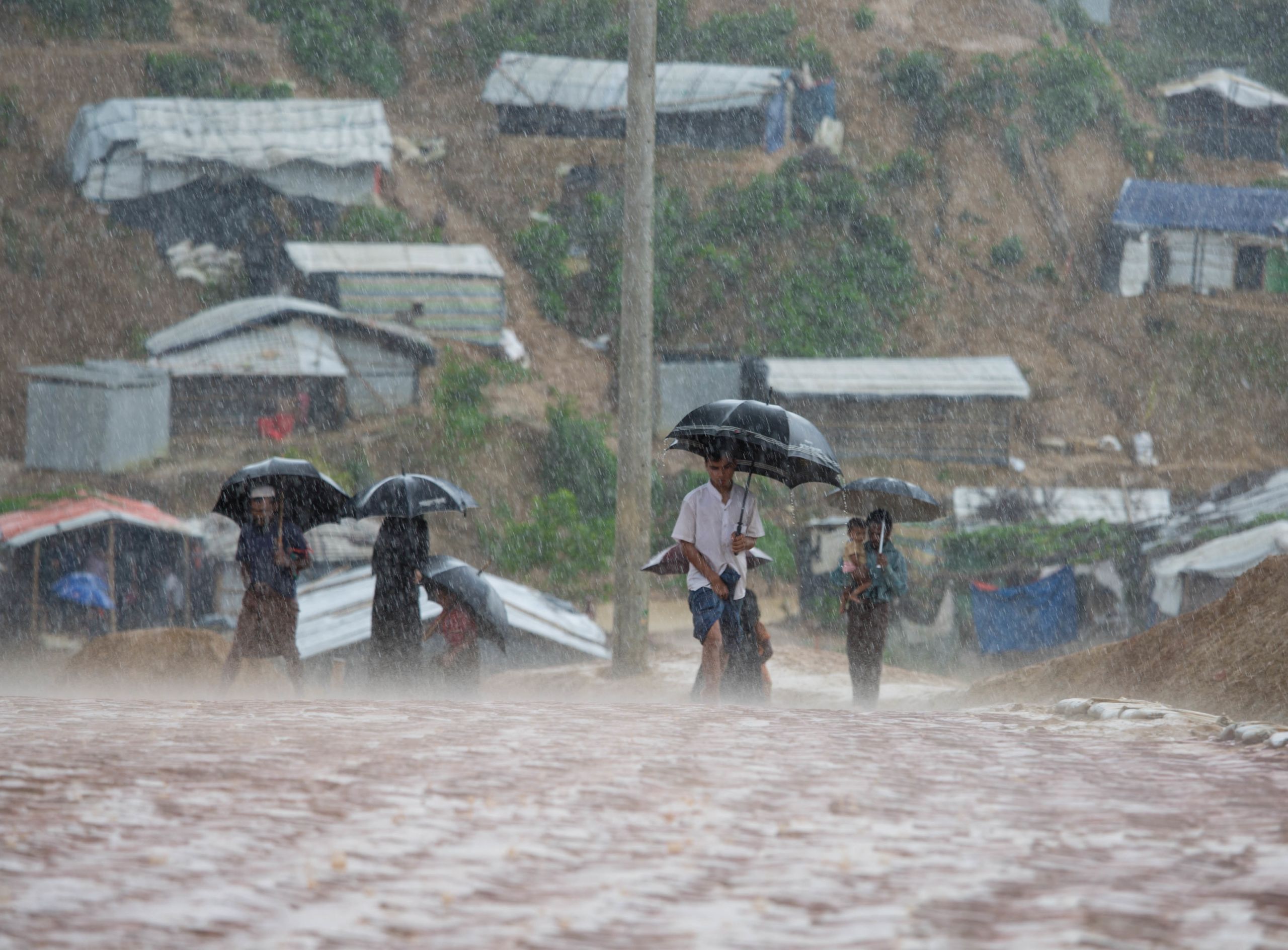
Photo: Brad Zerivitz/American Red Cross
Photo: Brad Zerivitz/American Red Cross
Now, CPP counts on nearly 60,000 trained volunteers in 13 districts to deliver cyclone warning messages produced by the Bangladesh Meteorological Department.
Strategically placed radar stations transmit regular updates of potentially devastating storms long before they make landfall, which triggers immediate action from the government all the way down to village level.
The success of the program stems from its simplicity — and its devoted village-based volunteer and communications network that expedite the warnings throughout rural communities, according to Ahmadul Haque, director of CPP under Bangladesh’s Ministry of Disaster Management and Relief.

Cyclone Preparedness staff and volunteer demonstrate the wireless system where they receive storm alerts in Cox’s Bazar.
Cyclone Preparedness staff and volunteer demonstrate the wireless system where they receive storm alerts in Cox’s Bazar.
Vital warning information can be disseminated to the district level via a wireless system — and then to the public via a flag warning system — in less than 15 minutes from the time of warning issuance to the beginning of evacuation orders, Haque explained.
The most important pillar of the program is the volunteers — who receive four days of training twice a year — usually between ages 18-35, who must be permanent residents of the operational area, and should be employed.
“If you have no food in your house, how can you volunteer to help someone else?” Haque said.
“Last December, a team from Iraq visited and went through all our volunteer activities. They have no risk of cyclone, but they’re going to intervene in man-made disasters. They came here to know how community volunteers can help the national effort. This is universal.”
In May 2016, CPP mobilized more than 50,000 volunteers across 18 districts to help with the safe evacuation of about 500,000 people to shelters ahead of Cyclone Roanu — which killed 24 people.
It was a “shining example of what can be achieved when you invest in local systems and volunteer networks to ensure that early warnings are acted on and that the public is risk informed,” said Robert Glasser, former head of the U.N. Office for Disaster Risk Reduction, in a statement at the time.
Volunteers jumped into action again ahead of Cyclone Mora’s landfall in 2017, which claimed nine lives.
CPP has worked so well, in fact, that countries throughout Asia have sent delegations to Bangladesh to learn more about how they might adopt it for their own use, Haque said.
The latest recruits to the CPP volunteer pool are 500 Rohingya men and women, who have been trained in search and rescue, first aid techniques, and the dissemination of warning signals, as well as to help people to take shelter.
“Each and every person here has huge potential. We just have to bring it out,” said Harun al Rashid, American Red Cross staff member and one of the original founders of CPP in the 1970s, who is now training Rohingya refugees on skills needed for the monsoon season.
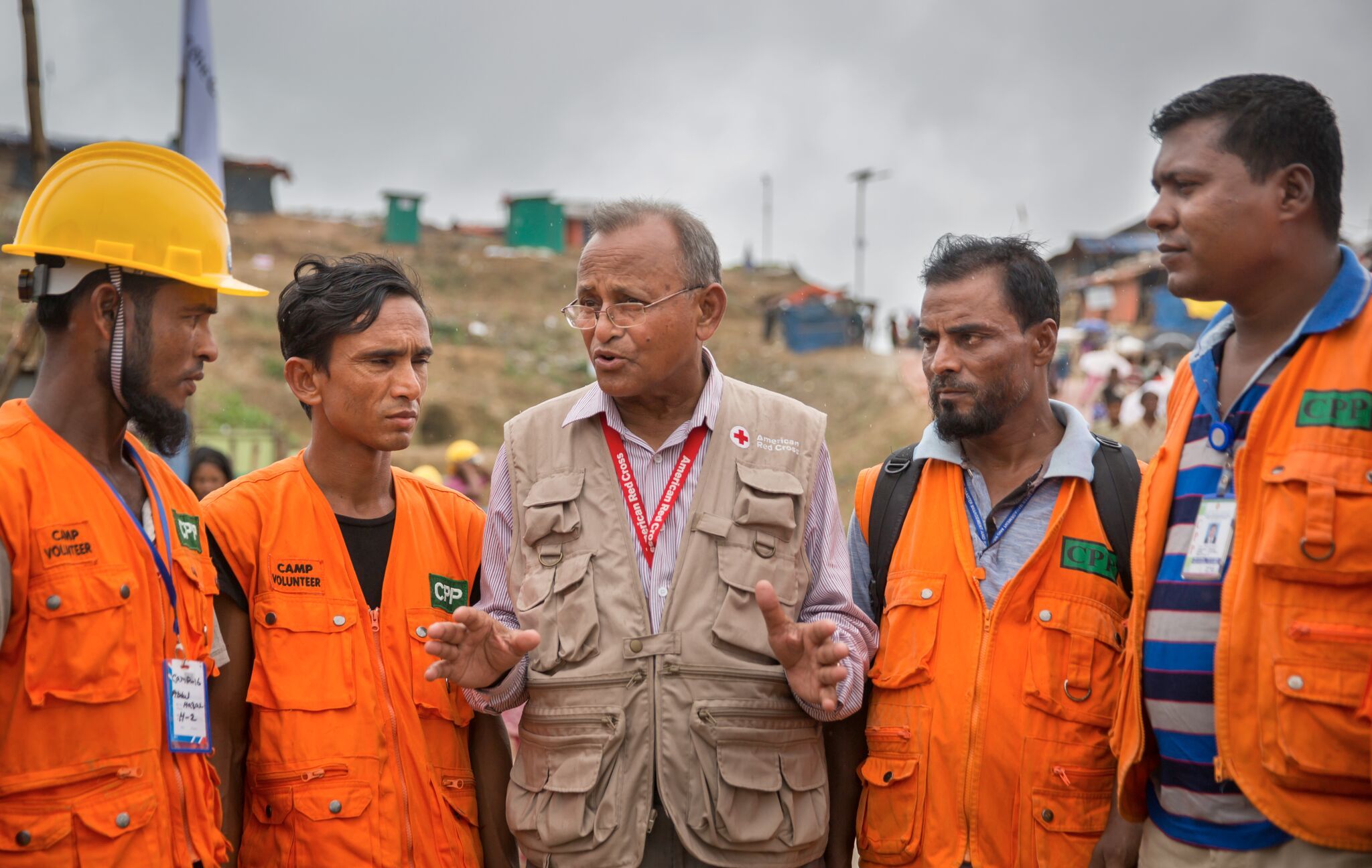
Harun al Rashid, American Red Cross staff member and one of the original founders of CPP, speaks with new Rohingya volunteers. Photo: Brad Zerivitz/American Red Cross
Harun al Rashid, American Red Cross staff member and one of the original founders of CPP, speaks with new Rohingya volunteers. Photo: Brad Zerivitz/American Red Cross
The program plans to recruit at least 10 men and 10 women for each of the 30 camps in the region. Some of them will go door to door, to ensure their neighbors are aware of the danger, while others will take on the responsibility of spreading the word via megaphone, hand siren, or raising the signal flags — which will range in number from one to three, based on the severity and proximity of the impending storm.
A host community CPP volunteer will also call designated leads within the refugee camps to ensure they’ve received the meteorological warning signal.
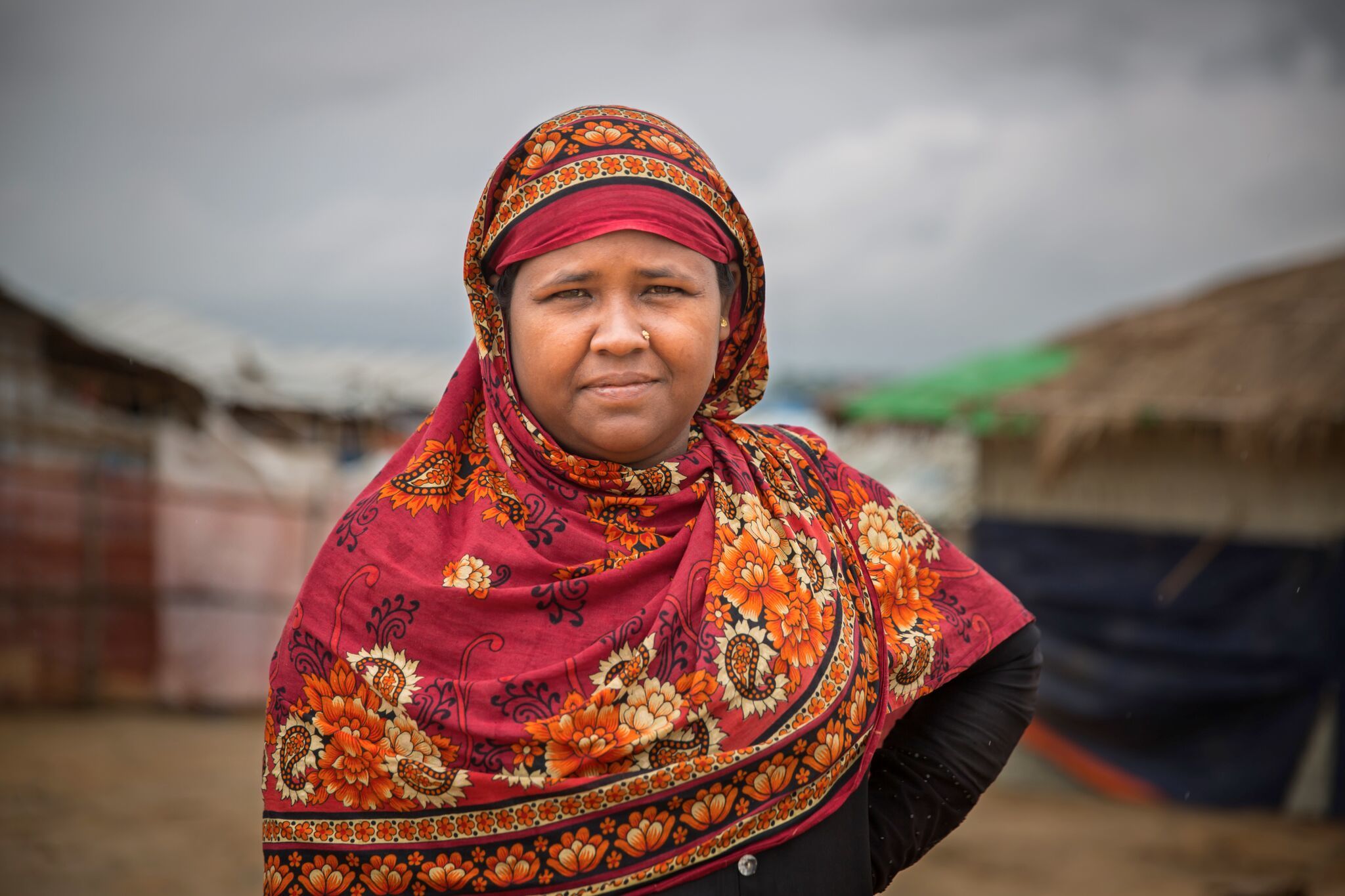
“I volunteer because I want to help people stay safe during cyclone season,” said Anwara Begum, a recently trained Rohingya volunteer. Photo: Brad Zerivitz/American Red Cross
“I volunteer because I want to help people stay safe during cyclone season,” said Anwara Begum, a recently trained Rohingya volunteer. Photo: Brad Zerivitz/American Red Cross
The Red Cross has worked closely with the camp’s communication with communities working group, and others, to help disseminate information about the meaning of the flags and hand sirens via radio programs and simulations: “You can’t get an early warning if people do not know what the early warning is,” said Achala Navaratne, Bangladesh country representative for the American Red Cross.
Along Bangladesh’s coast, donning a bright orange CPP volunteer vest or rain jacket is a badge of honor. The same is now true for Rohingya volunteers in the city-sized Kutupalong-Balukhali camp, as well as in the 10 smaller camps scattered down the coast, Navaratne said.
The Red Cross recruited volunteers mainly from existing fire safety groups, although there was a lot of interest from the community to be involved, he said.
In the dusty clearing in Kutupalong, teams of two women and two men demonstrate liste to the warnings on the short-wave radio, then raise one, two, and three flags. Hundreds of people — mainly youth — stand in a ring and watch the happenings intently. These are the people the volunteers want to keep safe, 21-year-old Kafayet Ullas, one of the volunteers who demonstrated what he’s learned during the simulation, told Devex.
“This is very important for all people, because when the storm is starting, people should know about preparation,” Ullas said. “So I got training to save my own people, my neighbors.”
Ullas oversees the 20 volunteers in his camp and feels confident that both he and his team will know what to do when the signal is given, although he’s concerned about the lack of safe evacuation options — especially for pregnant women and young children.
Though Ukhia is less prone to storm surges, low-lying Teknaf could see this tsunami-like phenomenon if a cyclone were to hit. There are already about 4,000 storm shelters along Bangladesh’s coast, and a recent deal with the World Bank could see more built in “incremental stages” in the next few years, Navaratne said. For now, most refugees are urged to reinforce their shelters and remain there, or in a nearby reinforced mosque or health clinic in geographical areas deemed more stable.
In late May, the radar station alerted the region to an approaching storm depression. Immediately, the flags in the camps went up. The storm didn’t come close enough to warrant a second or third warning flag — but it showed that the system in the camps is already working, Navaratne said.
In the coming months, a total of 3,000 Rohingya will be trained as CPP volunteers.
“This is beyond our mandate,” CPP’s Haque said of training the refugees and rolling out the decades-old system in the camps. “But there must be preparedness. Disaster management must start before disaster.”
Made in collaboration with:
Julie Espinosa, Delia Behr, Dee Wisne
